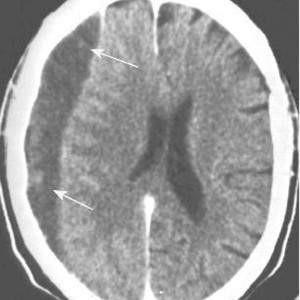Blunt carotid and vertebral artery injuries (BCVI) are an under-appreciated problem after blunt trauma. Several screening tools have been published over the years, but they tend to be unevenly applied at individual trauma centers. I will discuss them in detail in the next section.
For the longest time, the overall incidence of BCVI was thought to be low, on the order of 1-2%. This is the number I learned years ago, and it has not really changed over time.
But how do we know for sure? Well, the group at Birmingham retrospectively reviewed every CT angiogram (CTA) of the neck they did in a recent two-year period. They did this after adopting a policy of imaging each and every one of their major blunt trauma patients for BCVI. Each patient chart was also evaluated to see if the patient met any of the criteria for the three commonly used screening systems.
During the study period, a total of 6,287 of 6,800 blunt trauma patients underwent BCVI screening with CTA of the neck. They discovered that 480 patients (7.6%) were positive for BCVI!
This is a shocking 8x higher than we expected! So why hasn’t this been obvious until now? Most likely because we were previously only aware of patients who became symptomatic. Luckily, many of these patients dodge the proverbial bullet and never exhibit any symptoms at all.
And what about pediatric patients? The neurosurgery groups at the University of New Mexico and Texas Children’s Hospital analyzed data in the Kids’ Inpatient Database (KID), which contains nationally representative pediatric data from the US. Five samples were obtained three years apart, beginning in 2000 and extending to 2012.
There were nearly 650,000 admissions for blunt trauma in the database, and 2150 were associated with BCVI. There was an interesting trend: incidence in 2000 started at 0.24% and increased to 0.49% in 2012. This represents a relative doubling of cases! Keep in mind that the absolute numbers remained very small, especially compared to the adult incidence.
Children aged 4 to 13 had the lowest risk of sustaining BCVI. This was higher in younger kids (ages 0-3), probably due to their big heads. It was also higher in adolescents and young adults (age 15-20). The injury was found more often in conjunction with cervical spine, skull base, clavicle, and facial fractures, as well as in children with TBI and intracranial hemorrhage.
Over one-third of children sustaining BCVI suffered a stroke (37%). Mortality was high, with a total mortality of 13%. This increased to a 20% rate if a stroke occurred.
So why should we be worried? This is one of those clinical entities like blunt thoracic aortic disruption that potentially has terrible consequences if ignored. And it seems to be worse among children even though it is far less common. Although the number of patients who develop sequelae from their BCVI is small, suffering a stroke can be catastrophic.
Should we perform a screening study for all blunt trauma patients? It seems like overkill, or is it? Is there any way we can be more selective about it?
In the next post, I’ll review the current screening tools used to determine which patients should receive CTA and how good they are.
References:
- Universal screening for blunt cerebrovascular injury. J Trauma 90(2):224-231, 2021.
- Blunt cerebrovascular injury in pediatric trauma: a national database study. J Neurosurg Pediatr. 2019



